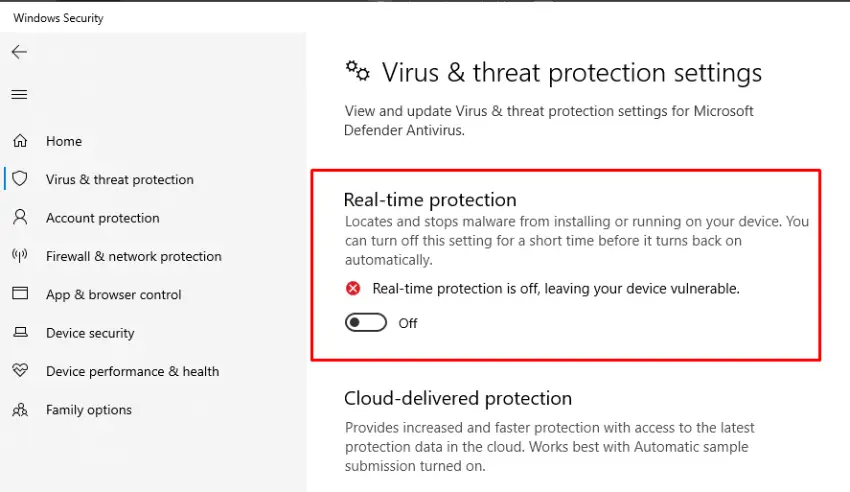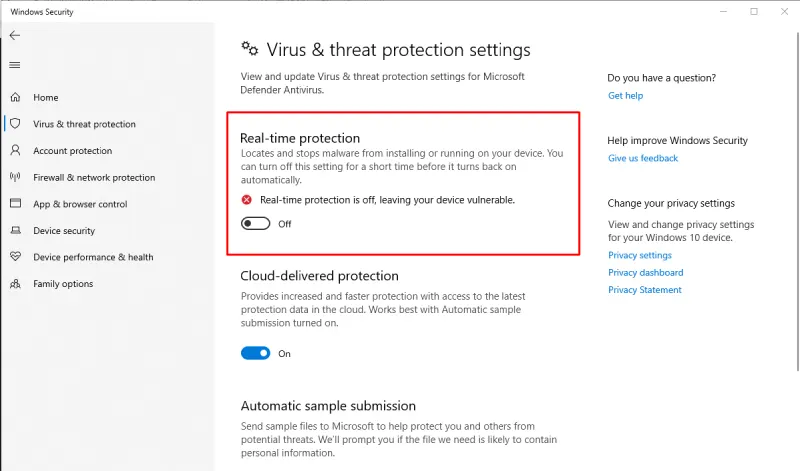There may come a time in your Windows journey when you want to use KMSpico to activate Windows or Office software. However, your antivirus software, specifically Windows Defender, can often interfere with its smooth operations.
When allowing KMSpico in Windows Defender, you may wonder how to navigate this process smoothly without compromising your system’s security. By understanding the steps in adding KMSpico to the exclusions list, you can ensure that the software operates seamlessly alongside Windows Defender.
However, important considerations must be remembered when striking the right balance between security and functionality. So, let’s explore the intricacies of integrating KMSpico into Windows Defender to optimize your system’s performance and protect it effectively.
How to Allow KMSpico in Windows Defender

To allow KMSpico in Windows Defender, you must understand how exclusions work in the security settings. Follow these steps to allow KMSpico in Windows Firewall Defender:
- Understanding exclusions in Windows Defender
- Accessing Windows Defender settings
- Adding exclusions for KMSpico
- Disabling real-time protection temporarily
- Installing and configuring KMSpico
- Activating windows with KMSpico
- Regular maintenance and scanning
Step 1: Understanding Exclusions in Windows Defender
Understanding exclusions in Windows Defender is essential for allowing KMSpico to operate without interference from the antivirus software.
Exclusions are specific files, folders, file types, and processes that Windows Defender skips during scans. Adding KMSpico to the Windows exclusions list informs Windows Defender that this software is trusted, preventing false positives and interruptions during its operation.
To add an exclusion for KMSpico in Windows Defender, you must access the exclusions settings within the antivirus program. This process involves navigating the Windows Defender Security Center or Windows Security app, depending on your Windows version.
Once you locate the exclusions section, add KMSpico’s installation folder or executable file so Windows Defender doesn’t flag it.
Step 2: Accessing Windows Defender Settings
You can access the Windows Defender settings by navigating to the Start menu or Settings on your computer. Once there, locate the Virus and Threat Protection settings.
This will open up a window where you can manage your device’s security settings, including exclusions. Within these settings, you can add exclusions for files, folders, file types, and processes that you trust and want Windows Defender to ignore during scans.
Accessing Windows Defender settings allows you to customize the security preferences to accommodate specific software like KMSpico. Familiarizing yourself with these settings is crucial in ensuring that your chosen exclusions are properly configured and your device’s security is maintained.
Step 3: Adding Exclusions for KMSpico
Consider adding the exclusion for KMSpico in Windows Defender to prevent interference during activation. To do this, navigate to the Windows Defender settings and select the option to add exclusions.
Choose the location where KMSpico is downloaded from a reliable source on your system. By adding this exclusion, you’re informing Windows Defender to ignore the specified folder or file related to KMSpico, allowing it to function without interruptions.
Step 4: Disabling Real-Time Protection Temporarily

To enable KMSpico in Windows Defender, temporarily disable real-time protection to facilitate smooth activation. Disabling real-time protection doesn’t leave your system vulnerable permanently; it’s a temporary measure needed for the activation to proceed without interruptions.
To disable real-time protection, open Windows Security by clicking the shield icon in the taskbar. Go to ‘Virus & threat protection’ and click ‘Manage settings.’ Locate the Real-time protection toggle and switch it off. Confirm any prompts that may appear to complete the process.
Step 5: Installing and Configuring KMSpico
Once you have completed the necessary preparations, download the KMSpico tool from a trusted source. Before running the installer, ensure that your real-time protection in Windows Defender is still turned off.
After downloading, locate the KMSpico setup file in your downloads folder and give it admin permissions. Then, follow the on-screen instructions to install the tool on your system.
Due to the nature of the software, you may be prompted with security warnings during the installation process. You can proceed with the installation by allowing the necessary permissions.
Once the installation is complete, you can configure KMSpico to suit your needs. The tool provides options for activating various Microsoft products, including Windows and Office. Select the appropriate options and follow any additional instructions the tool provides.
Step 6: Activating Windows with KMSpico
Once you have installed and configured KMSpico, follow the activation steps provided. Begin by running KMSpico and initiating the activation process. At this point, disable Windows Defender temporarily to prevent any interference with the activation. Proceed with the activation as directed by the software.
Once Windows is successfully activated, remember to re-enable Windows Defender to ensure ongoing system security. By temporarily turning off Windows Defender during activation, you allow KMSpico to apply the necessary modifications to activate Windows effectively.
Step 7: Regular Maintenance and Scanning
After activating Windows using KMSpico, stay vigilant against potential threats. Regularly scanning your system with Windows Defender can help ensure that no malicious software is introduced during the activation process.
Incorporating KMSpico into Windows Defender’s allowed list allows you to streamline the scanning process and get real-time protection.
Monitoring your system’s performance post-activation is also crucial to detect any anomalies indicating a security breach. Setting up scheduled scans and system maintenance tasks can help maintain your system’s integrity and safeguard it against potential risks.
Why should I be cautious about disabling real-time protection in my antivirus software?

Disabling real-time protection in your antivirus software exposes your system to potential malware, viruses, and security threats. Real-time protection monitors your system for malicious activity, helping block threats before they can cause harm.
When this feature is disabled, your computer becomes more susceptible to attacks, as no immediate defense mechanism is in place. Malware can infiltrate your system more easily, leading to data breaches, malfunctions, and privacy violations. So reactivate the real-time protection to ensure ongoing security for your device.
Can I use Microsoft Office if product activation fails?
If product activation fails in Microsoft Office, you may still be able to utilize the software by reactivating it using tools like KMSauto.
When an error occurs because the application is unable to verify your license or subscription status, access to Office features may be restricted. This issue can arise from various factors, such as outdated applications, an expired subscription, or incorrect device date and time settings.
Reactivating Office through tools like KMSauto can often resolve the problem and allow you to continue using Microsoft Office seamlessly. By addressing the activation issue promptly with appropriate tools, you can regain full access to the Office suite and its functionalities.
Uninterrupted and Secure Activation with KMSpico
By following this comprehensive guide, you can efficiently run KMSpico to activate your Windows without any disruptions from your antivirus. Remember to be cautious when disabling real-time protection or adding exclusions, as such changes can expose your system to potential threats.
Nonetheless, with the right precautions and regular system scans, you can balance the activation process with your system’s security needs.
Moreover, in case of product activation failure, alternative solutions like KMSauto are also available to ensure uninterrupted access to all the features of your Windows and Office software. Stay vigilant with your exclusions list to keep your software running securely and smoothly.


